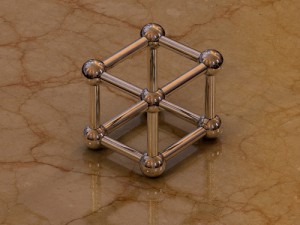This picture elicits the following problem that aligns to the Common Core State Standard: CCSS.Math.Content.HSG.SRT.C.8 Use trigonometric ratios and the Pythagorean Theorem to solve right triangles in applied problems.
The problem to solve is: Use trigonometric ratios and the Pythagorean Theorem to solve for the legs of the right triangles.
The students would each be given a print out of the picture and a piece of grid paper. With the grid paper on top of the original picture they will draw each right angle they are able to pinpoint. While they trace each right angle they have to make sure that each is drawn separately so they can calculate each measurement. After the angles are drawn the students will then connect the legs to make a triangle. In order to figure out at least one leg the students have to make sure the right angle lines up with a point on the grid paper. From there the students will use trig ratios and the Pythagorean Theorem to solve for the legs and hypotenuse of the right triangles.
This activity will be entertaining for the students because the figure is very interesting to look at. This will also show the students that math can be used outside of the classroom in real-life. This picture and CCSS will keep the students engaged because they will be communicating with their classmates to compare answers and strategies.

Gricelda, I like your idea of using an interesting-looking cube to spark students’ interest and having them use the Pythagorean Theorem to solve for measurements. It is interesting to see how many different settings the Pythagorean Theorem can be used in!
Gricelda, I really like your idea of using this picture to model the Pythagorean Theorem. I also think this could be used to model common core standard 7.G.6.: Solve real-world and mathematical problems involving area, volume
and surface area of two- and three-dimensional objects composed of
triangles, quadrilaterals, polygons, cubes, and right prisms.
You could ask the student to calculate the area and surface area of the cube to have them experiment with three-dimensional objects.